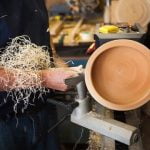Refinishing oak woodwork can be a great way to breathe new life into your home while preserving the natural beauty of this classic material. Oak woodwork is known for its durability, versatility, and stunning grain patterns, making it a popular choice for many homeowners. In this comprehensive guide, we will take you through the process of refinishing oak woodwork, from understanding its characteristics and benefits to the essential tools and materials needed for the job.
Before diving into the refinishing process, it’s important to evaluate the current condition of your oak woodwork. This will help you determine the necessary steps to take in order to achieve the best results. Understanding how to properly assess the state of your woodwork is crucial in ensuring that your refinishing project is successful and long-lasting.
In addition to understanding the characteristics and evaluating the condition of your oak woodwork, we will also provide a step-by-step guide on how to prepare the woodwork for refinishing. Proper preparation is key to achieving a professional-looking finish that will enhance the natural beauty of your oak woodwork. Stay tuned as we explore each step in detail and equip you with all the knowledge you need to successfully refinish your oak woodwork.
Evaluating the Condition
When it comes to refinishing oak woodwork, the first step is to assess the current condition of the wood. This will help you determine the best approach for refinishing and ensure that the final result is both beautiful and long-lasting. There are a few key factors to consider when evaluating the condition of your oak woodwork.
Visible Damage
Begin by closely examining the oak woodwork for any visible damage such as scratches, dents, or gouges. Take note of areas where the finish may be worn down or damaged. Additionally, look for any signs of water damage or mold. This assessment will help you understand what repairs may be necessary before refinishing.
Finish Quality
Next, evaluate the quality of the current finish on the oak woodwork. Determine whether the existing finish is peeling, flaking, or chipping. Consider whether there are any uneven patches or discoloration. Understanding the condition of the current finish will guide your decision on whether stripping and sanding is necessary.
Structural Integrity
Lastly, assess the structural integrity of the oak woodwork itself. Look for any warping, splitting, or other issues that may affect its ability to hold a new finish. It’s important to address any structural concerns before proceeding with refinishing to ensure that the wood can support a new finish and maintain its beauty for years to come.
Taking these factors into consideration will provide you with valuable insight into how to refinish oak woodwork effectively and achieve professional results that enhance both the beauty and longevity of your woodwork.
Essential Tools and Materials
When it comes to refinishing oak woodwork, having the right tools and materials is essential for achieving a professional-looking result. Here’s a comprehensive list of everything you’ll need for the refinishing process.
Protective Gear
Before starting any refinishing project, it’s important to prioritize safety. Be sure to have protective gear such as gloves, safety goggles, and a respirator mask to protect yourself from harmful fumes and chemicals.
Stripping and Sanding Tools
To effectively remove the old finish from the oak woodwork, you’ll need paint stripper, a putty knife, and sandpaper in various grits. An electric sander can also be handy for large surface areas.
Staining and Sealing Supplies
Choose a high-quality wood stain that complements the natural beauty of oak wood. Additionally, you’ll need a sealing product such as polyurethane or varnish to protect the wood from moisture and wear.
Applicators
For applying both the stripping agent and finishing products, consider having brushes, rags, or foam applicators on hand. Make sure to have different types of brushes for different stages of the process.
By ensuring you have all these essential tools and materials on hand before starting your oak woodwork refinishing project, you’ll be setting yourself up for success in achieving a beautiful end result that will last for years to come.
Preparation
Properly preparing your oak woodwork before refinishing is crucial to achieving a beautiful and long-lasting result. Here’s a step-by-step guide on how to prepare the woodwork for the refinishing process:
- Clear the Area: Start by removing any furniture, decor, or items around the oak woodwork to create a clear and spacious working area.
- Clean the Surface: Use a wood cleaner or a mixture of mild soap and water to thoroughly clean the oak woodwork. This will remove dirt, grime, and any residues that could affect the refinishing process.
- Remove Hardware: If your oak woodwork has any hardware such as knobs, handles, or hinges, carefully remove them using appropriate tools.
- Fill in Gaps and Cracks: Inspect the oak woodwork for any gaps, cracks, or imperfections. Use a suitable wood filler to fill in these areas and ensure a smooth surface for refinishing.
- Sand the Wood: Lightly sand the entire surface of the oak woodwork using fine-grit sandpaper. This will help remove any remaining finish, smooth out imperfections, and promote better adhesion for the new finish.
Taking your time with each step of the preparation process will ensure that your oak woodwork is ready for refinishing. Proper preparation sets the foundation for a successful and professional-looking outcome.
Once you have completed these steps, your oak woodwork will be clean, smooth, and ready for the next phase of refinishing. By properly preparing the surface, you are ensuring that your efforts in stripping, staining, sealing and applying finish will result in stunning results that last.
Stripping and Sanding
Stripping
When it comes to removing the old finish from your oak woodwork, you have a few options to consider. One popular method is using a chemical stripper, which can effectively lift off the existing finish. Another option is heat guns or blow torches, which can also be used to soften and scrape away the old finish. Whichever method you choose, be sure to work in a well-ventilated area and wear protective gear such as gloves and goggles.
Sanding
Once you’ve removed the old finish, it’s time to sand down the oak woodwork to create a smooth surface for the new finish. Start with a coarse grit sandpaper to remove any remaining finish or imperfections. Then, gradually move on to finer grits of sandpaper to achieve a smooth and even surface. Be sure to sand with the grain of the wood to avoid creating any scratches or swirl marks.
Tips for Success
- Use a putty knife or scraper to help remove any stubborn areas of old finish
- Consider using an orbital sander for larger areas of oak woodwork
- Always wear a mask when working with chemical strippers or sanding to protect yourself from fumes and sawdust
By following these detailed instructions for stripping and sanding your oak woodwork, you’ll be well on your way to achieving a beautifully refinished result that will enhance the natural beauty of your home.
Staining and Sealing
Once you’ve selected the appropriate stain, sealing the wood is necessary to protect it from moisture, wear and tear, and other potential damage. Polyurethane is a popular choice for sealing oak woodwork due to its durability and ability to resist scratches and heat. When applying the sealant, ensure that you do so in a well-ventilated area and follow the manufacturer’s instructions carefully. Typically, multiple coats are required to achieve adequate protection for your refinished oak woodwork.
It’s also important to consider the type of finish you desire – matte or glossy – when choosing both the stain and sealant. A glossy finish can provide a sleek and polished look, while a matte finish offers a more natural appearance. Whichever finishing option you decide on, be sure to apply it evenly for a professional result that enhances the beauty of your newly refinished oak woodwork.
| Stain Type | Sealant Type |
|---|---|
| Oil-Based | Polyurethane |
| Water-Based | Lacquer |
| Gel Stains | Varnish |
Applying the Finish
Once you have prepared and sanded your oak woodwork, it’s time to apply the finish. The finish not only enhances the natural beauty of the wood but also provides protection against everyday wear and tear. To achieve the desired look and ensure long-lasting durability, it’s important to choose the right finish and apply it correctly.
There are various finishes available for oak woodwork, including polyurethane, lacquer, shellac, and oil-based finishes. Each type of finish offers different levels of durability and sheen. When choosing a finish, consider the level of protection needed for your woodwork and the aesthetic you want to achieve. For example, if you want a glossy look, a polyurethane finish may be ideal, while an oil-based finish can provide a more natural appearance.
Before applying the chosen finish, make sure to thoroughly clean the sanded surface of any dust or debris. Then, follow the manufacturer’s instructions for applying the finish. Use a high-quality brush or applicator pad to ensure even coverage. Apply thin coats of finish, allowing each layer to dry completely before applying the next one.
Properly applying the chosen finish is crucial in achieving a professional-looking result for your refinished oak woodwork. Take your time and follow these steps carefully to protect and enhance the natural beauty of your oak woodwork for years to come.
| Types of Finish | Protection Level |
|---|---|
| Polyurethane | High |
| Lacquer | Medium |
| Shellac | Low |
| Oil-Based Finish | Natural Appearance |
Maintenance and Care
In conclusion, refinishing oak woodwork can be a rewarding and cost-effective way to breathe new life into your home. Understanding the characteristics and benefits of oak woodwork is essential in appreciating its durability and timeless appeal. Before embarking on the refinishing process, it’s crucial to evaluate the condition of your oak woodwork to determine the necessary steps for restoration.
Having the essential tools and materials at hand is key to a successful refinishing project. Proper preparation, including stripping, sanding, and cleaning the wood, is crucial for achieving a smooth and professional-looking finish. When it comes to staining and sealing, taking the time to choose the right products will ensure that your oak woodwork retains its beauty for years to come.
Finally, learning how to properly maintain and care for your refinished oak woodwork will help preserve its appearance and protect it from everyday wear and tear. By following these steps and guidelines on how to refinish oak woodwork, you can enjoy the beauty of your renewed woodwork for many years while adding value to your home.
Frequently Asked Questions
How Do You Make Oak Trim Look Modern?
To make oak trim look modern, you can start by considering a fresh coat of paint. White or a light gray can give the trim a contemporary feel. Additionally, updating the hardware, such as handles and hinges, to a sleek and modern style can also help to modernize the look of the oak trim.
How Do You Refinish Old Oak Trim?
Refinishing old oak trim involves several steps. First, you’ll need to sand down the surface to remove any existing finish or imperfections. Then, apply a wood stain in a shade that complements your desired aesthetic. Finish off with a clear protective sealant to bring out the natural beauty of the oak and protect it from future wear and tear.
How Do You Modernize Oak Wood?
Modernizing oak wood involves updating its color and texture. Consider using a product like wood bleach to lighten the tone of the oak if necessary, followed by applying a new stain in a contemporary color like dark espresso or ash gray.
You can also add visual interest by applying different textures, such as wire brushing or distressing techniques, for a more modern appearance.

Hi everyone! I’m a woodworker and blogger, and this is my woodworking blog. In my blog, I share tips and tricks for woodworkers of all skill levels, as well as project ideas that you can try yourself.





